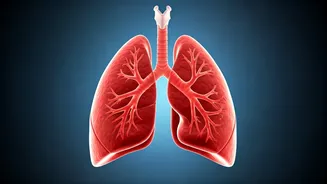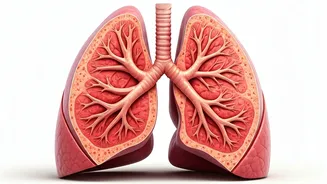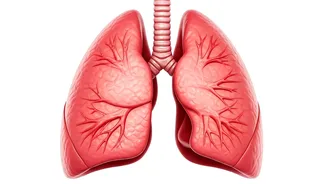Diaphragmatic Breathing
Diaphragmatic breathing, often called belly breathing, is a cornerstone for lung health. The primary goal of this technique involves fully engaging the
diaphragm, a significant muscle in respiration. To practice this, sit or lie comfortably, placing one hand on your chest and the other on your abdomen. Inhale slowly and deeply through your nose, allowing your abdomen to rise while keeping your chest relatively still. As you exhale slowly through pursed lips, gently press on your abdomen to encourage the diaphragm to contract. This exercise improves oxygen exchange by promoting fuller use of the lungs, and can even help to reduce stress. Practicing this technique for 5–10 minutes a day can significantly enhance your respiratory function and promote a sense of calm. Regular practice can lead to a more efficient breathing pattern, making it easier to manage respiratory challenges during the winter months. Try to focus on slow, controlled breaths, ensuring that your abdomen expands with each inhale and contracts with each exhale. This simple act of awareness can make a big difference in how you feel and breathe.
Pursed-Lip Breathing
Pursed-lip breathing is a simple yet potent technique that can help you manage shortness of breath and improve oxygen levels. This method involves exhaling slowly through pursed lips, similar to how you would blow out a candle. Begin by inhaling slowly and deeply through your nose, ensuring your lungs are fully expanded. Then, purse your lips as if you're about to whistle, and exhale slowly for twice as long as you inhaled. This method creates a gentle resistance that helps keep your airways open longer, allowing for better oxygen exchange. It is particularly beneficial for individuals with chronic respiratory conditions as it helps prevent air trapping in the lungs. You can practice this exercise anytime, anywhere, making it a convenient tool for managing respiratory symptoms. During winter, when respiratory illnesses are common, incorporating pursed-lip breathing into your routine can offer relief and improve your quality of life. Consistent use of this technique can provide noticeable improvements in your breathing efficiency, reducing breathlessness and increasing overall stamina.
Deep Breathing Exercises
Deep breathing exercises are excellent for increasing lung capacity and improving overall respiratory function. These exercises involve taking slow, deep breaths to maximize oxygen intake. Begin by sitting comfortably with your back straight and your shoulders relaxed. Inhale deeply through your nose, filling your lungs completely. Hold your breath for a few seconds, then exhale slowly through your mouth. This technique helps expand the lungs and improves the efficiency of gas exchange. Deep breathing exercises can be incorporated into your daily routine and may be practiced at any time. Practicing deep breathing exercises regularly can improve your lung function. It also promotes relaxation and reduces stress, which in turn can positively impact your respiratory health. When practicing deep breathing exercises, focus on feeling your abdomen expand and contract with each breath. Aim for slow, controlled breaths and maintain a steady rhythm to maximize the benefits. Regular deep breathing practice can significantly enhance your lung capacity and provide a sense of calm during the winter months.
Walking and Cardio
Incorporating walking and other forms of cardio into your routine is another effective method to strengthen your lungs. These activities enhance the efficiency of your lungs and cardiovascular system, making it easier to breathe. Start with moderate-intensity exercises like brisk walking, gradually increasing the duration and intensity as your fitness improves. Engaging in cardio strengthens the muscles involved in breathing, as well as the cardiovascular system. Regular exercise improves oxygen utilization, which results in better overall respiratory health. During winter, the cold air can sometimes trigger respiratory issues, so it's essential to exercise indoors if the weather is harsh. You can also vary your activities; activities like cycling, jogging, or swimming are also great ways to enhance your cardio health. Aim for at least 30 minutes of moderate-intensity exercise most days of the week to achieve the best results. Always remember to consult with your healthcare provider before starting any new exercise routine, especially if you have pre-existing health issues.
Yoga and Tai Chi
Yoga and Tai Chi are well-known for their focus on controlled breathing, flexibility, and overall well-being. These practices combine physical postures, breathing techniques, and meditation, all of which contribute to enhanced lung function. Specific yoga poses and Tai Chi movements encourage deep, controlled breathing, which helps expand lung capacity and improve oxygen exchange. The emphasis on breath control and mindful movement in these practices can also help reduce stress and improve mental clarity. During the winter, when respiratory problems can be exacerbated by stress, yoga and Tai Chi can offer valuable support. These practices are suitable for people of all ages and fitness levels, and can be easily adapted to suit your needs. You can attend a class or practice at home with the aid of instructional videos. Regular participation in yoga or Tai Chi helps to develop the muscles that support breathing and promote relaxation. As a result, they may improve your lung function and your overall health, making breathing easier.





